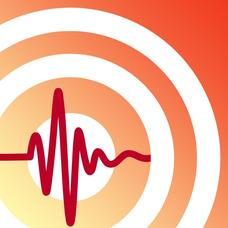Amateur seismologists explore Earth's earthquakes in real time using a variety of map styles and parameter selections.
Concepts
Additional Tags
App Overview
- Read a list of earthquakes based on your chosen parameters
- Pick which USGS data feed to view: 1, 7, or 30 days and either M1.0+ or M2.5+
- Sort the quake list by date of occurrence, magnitude, distance (from your location) or depth
- Filter by minimum magnitude
- Connect to QuakeFeed News with information about the most recent earthquakes
- Choose from eight different beautiful base maps:
- Street Map
- Topographic Map
- Satellite Imagery
- Imagery with Labels
- Shaded Relief Map
- Physical Map
- Terrain Map
- Ocean Bathymetry
- Select map style: Markers or circles
- Turn plate boundaries, which are identified by color, on or off
- Sharing options include e-mail, Twitter, and Facebook
- For individual seismic activities, link to the USGS website for further information
Curator Rating
-
Adherence to task
Serves as a outstanding reference tool
-
Worth the money
No cost, and of great value
-
Fun factor
Fascinating information about current earthquakes
-
Scaffolding of learning
No tutorial, but fairly intuitive
-
User safety
No in-app purchases or third party ads
-
Control and feedback
Filter by date of occurrence, magnitude, distance, or depth
-
How techie do I need to be?
Intermediate
Instructional Ideas
As a reference tool for your geology class, QuakeFeed Earthquake Map, Alerts, and News is a must-have! During your seismology unit, begin each class period by accessing data and displaying it on a screen for your class to see. Have them track the number of quakes that occur each day and make note of where they are occurring. There is nothing like the most up-to-date data to bring seismology to life for your class!
Since it is compatible with smart phones, you can recommend that learners download it and have them track seismic activity over an entire week as homework.
Classroom Considerations
The app is free of cost, so if your class members have their own mobile devices, they can download and access it as well.
Sharing platforms, location identification, and links to the Internet are all options within this app. Make sure to disable any that you do not want your class to have access to.
Pros
- Maps are from the GIS and are extremely high-quality
- User interface easily allows user to zoom in and out, pan, or tap on a quake marker for detailed information
- Individual seismic activity markers are color coded by magnitude
- Types of plate boundaries are identified by color
- Free app with no in-app purchases
Cons
- None


